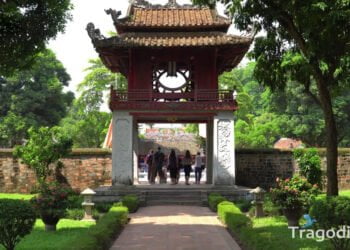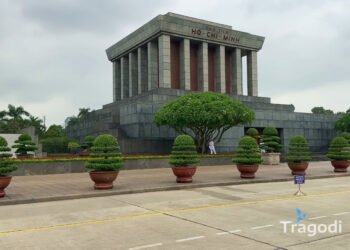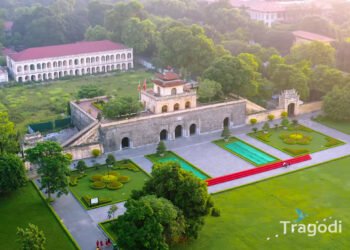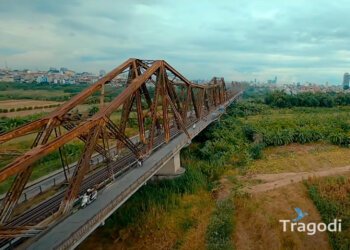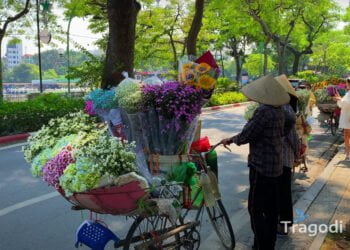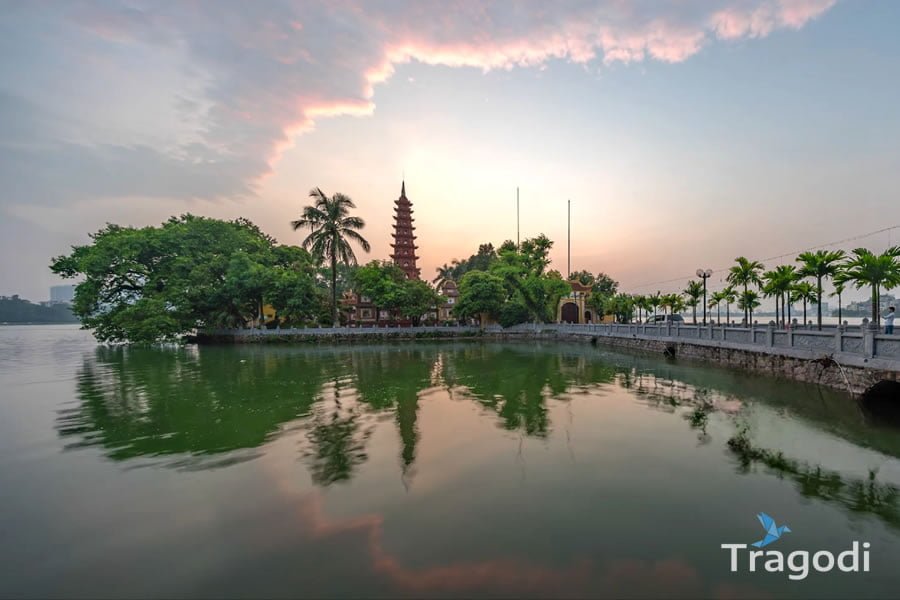
Tran Quoc Pagoda has a unique architecture, harmonious with the surrounding landscape, exuding a solemn, ancient, and elegant beauty. The pagoda is also a place to preserve many valuable relics, such as stone steles, bronze bells, Buddha statues, and other treasures. Tran Quoc Pagoda is an attractive spiritual destination, attracting many Buddhist followers and domestic and foreign tourists to visit, worship, and admire.
How to visit Tran Quoc Pagoda
To visit Tran Quoc Pagoda, it opens from 7:30 am to 6:00 pm daily, and admission is free. However, you should note some things when visiting the pagoda, such as:
- Dress appropriately, avoid wearing too short, shoulder-exposing, or belly-exposing clothes.
- Keep order, do not make noise, do not touch the worship items or take flash photos.
- Do not bring pets, do not smoke or eat within the pagoda premises.
- If you want to burn incense or make offerings, you can buy incense at the incense selling booth near the pagoda gate, with prices ranging from 10,000 VND to 50,000 VND. You should burn a small amount of incense to avoid air pollution and waste.
Highlights of Tran Quoc Pagoda
When entering the pagoda gate, you will see on the left a red brick wall with the three words Phuong Tien Mon and a couplet written in Nom script on both sides. On the right is a small lotus pond, creating a peaceful and comfortable space. After passing the pagoda gate, you will cross a small bridge to reach the main precinct of the pagoda.
Tran Quoc Pagoda has many notable architectural works, such as:
- Front hall: This is where Amitabha Buddha, Shakyamuni Buddha, and Avalokitesvara Bodhisattva are worshipped. In the front hall, there is also a stone stele carved in 1639, recording the restoration of the pagoda by Nguyen Xuan Chinh, a mandarin.
- Incense burning house: This is where Quan Binh, Quan Vu, Chu Thuong, Duc Ong, and other lay Buddhists are worshipped. The incense burning house has a unique architecture, with a red tile roof and round wooden pillars, decorated with many exquisite patterns.
- Upper hall: This is where Maitreya Buddha, Lieu Hanh Goddess, and other Bodhisattvas are worshipped. The upper hall has a five-bay roof, supported by 12 large wooden columns, exuding an ancient and solemn beauty.
- Bao Thap Tower: This is the most prominent structure of the pagoda, 15 m high, with 11 floors, each floor has 6 windows and a lotus peak. Inside the tower are many Buddha statues made of clay, wood, and copper, along with many other treasures. The tower was built in 1842, symbolizing the immortality of the Dharma.
In addition, the pagoda also has many other structures, such as the ancestral house, the monk’s house, the guest house, the dining hall, the garage, the flower garden, etc. You can walk around the pagoda to explore and feel its beauty.
Tran Quoc Pagoda is not only an ancient and beautiful pagoda but also a pagoda with deep historical and spiritual significance. The pagoda is closely associated with the formation and development of Thang Long – Hanoi, marking the imprint of many dynasties and historical figures. The pagoda is also a place to propagate the Dharma, a place for learning and practicing for many generations of monks and Buddhists. The pagoda is a place that brings peace.


